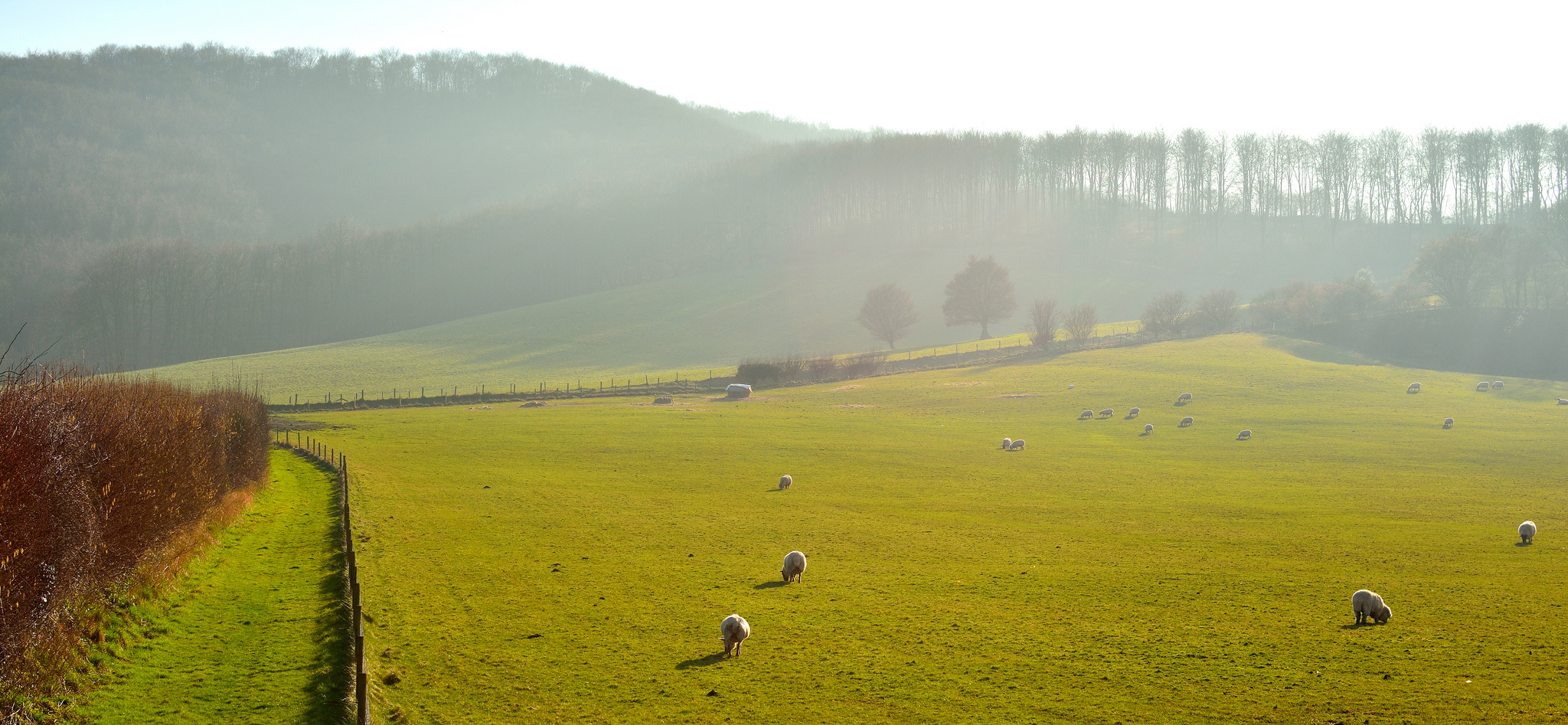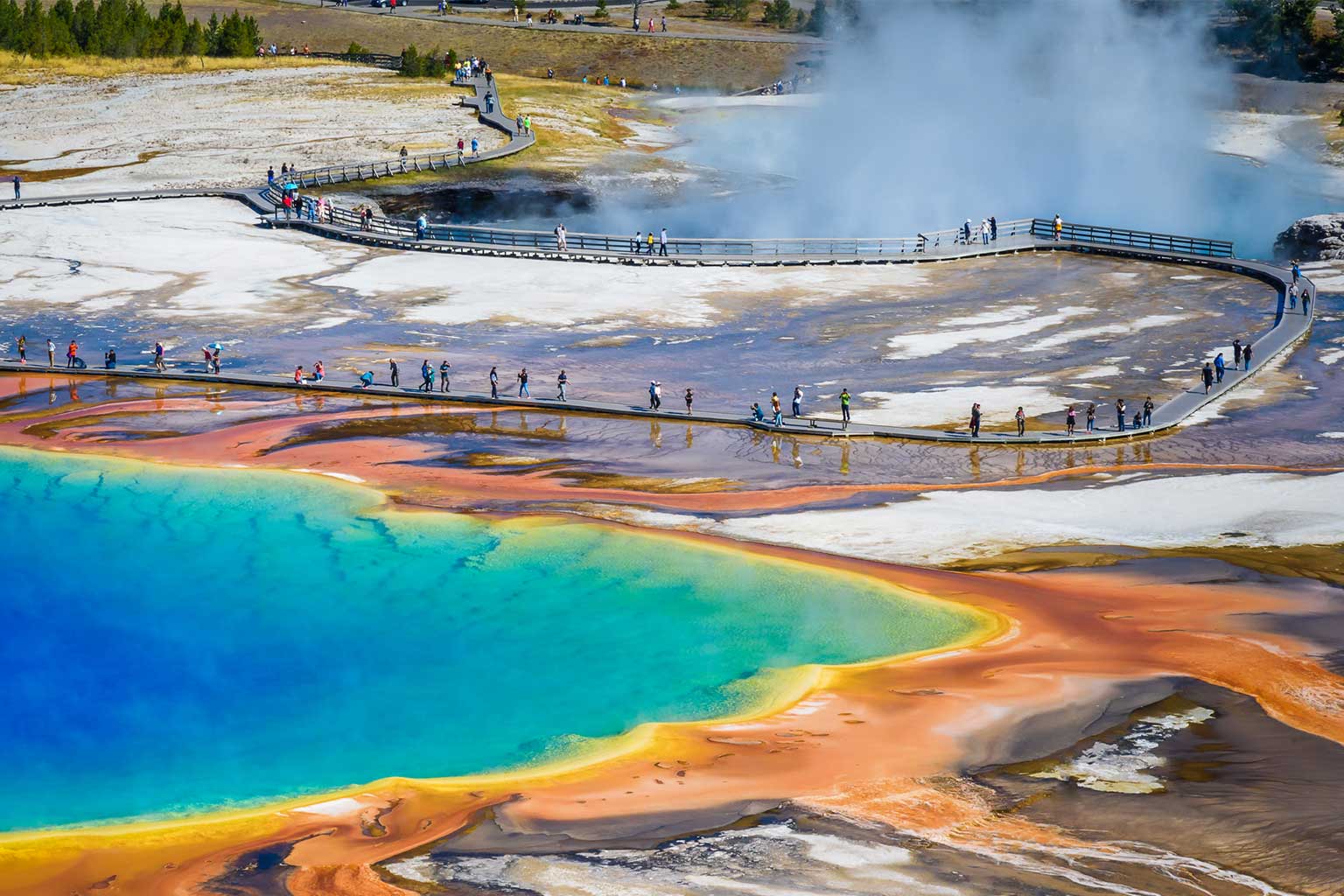Private protection of the environment is all around us, but it often goes unnoticed. Indeed, critics of free market environmentalism still insist that only government control can ensure preservation and environmental amenities. We think otherwise. “Greener Pastures,” a new PERC Reports feature compiled by Linda Platts, will gather evidence of private environmental protection and explore market-oriented proposals. We welcome submissions of additional examples.
Garnet mining has golden future
Alder Creek in southwestern Montana may soon run clean and clear again, and the towering tailings piles that line a seven-mile stretch of the creek will return to pastures and rolling hills. The huge heaps of softball-size stones and gravel have proven to be one of the world’s most plentiful and accessible sources of industrial-grade garnets.
The ravaged landscape where the garnets were found is the legacy of a gold mining operation from the early 1900s. Nine million dollars’ worth of gold was removed from the site by dredge boats that scooped 37 million cubic yards of earth from Alder Creek and left it piled along the banks.
Cominco American, a Spokane, Washington, mining company, will sift through these tailings, remove the garnets by water and screens, and then restore the upturned land by arranging the topsoil, gravels and large stones in their natural order. The mining process uses no chemicals and the company intends to reestablish the creek at the surface, as it now flows underground at the tailings pile.
The small, hard, deep-red stones are an environmentally safe product used in sand blasting, water purification systems and as a cutting material. Cominco American expects to produce 45,000 tons of garnets a year, worth $200 a ton. The operation will have an annual payroll of $1.5 million and create as many as 40 new jobs for the surrounding small towns.
–The Billings Gazette
Electricity markets shed new light
If you think choosing a long-distance telephone company is frustrating, steel yourself for expanding electricity markets. In the near future, you will probably have to choose your electric utility as well.
Currently, power companies have exclusive franchises to serve specific regions. Customers have no choice of power companies, even if a nearby company offers lower rates. Richard Tabors, a senior engineer at MIT, advocates allowing customers “to exercise market clout and bring about lower prices” by choosing their own electric utility. Groups of customers could even package their needs and seek an intermediary to shop for the best deal.
Stephen R. Connors of MIT’s Energy Laboratory would like to take markets a step further. He thinks customers should be able to choose the source of their electricity, for instance natural gas, hydro or renewable energy. It is a way for customers to tell the market what they want and if they are willing to pay a premium for particular sources. A competitive marketplace and free choice could bring about greater efficiency and cleaner sources of electrical energy.
–Technology Review
Visiting wild places packs a price
For the first time ever, a stroll through some of America’s national forests is going to cost a small fee. As part of a nationwide Forest Service pilot project, user fees will be charged at about 50 national forests. The program allows 80 percent of the fees collected to remain at the local level, while the other 20 percent will be distributed among all the projects in the test program
The fee project was started in an effort to offset budget shortfalls. Recreational use of the national forests steadily increases, and federal appropriations do not keep pace. The fees and method of collection will vary according to the site. At Mount St. Helens in Washington, the proposed $5 per car entrance fee could raise as much as $2.5 million. In Arizona, driving the scenic Catalina Highway through the Coronado National Forest will cost $4 per car, which could raise $500,000 per year. The money will be used to repair campgrounds, restrooms, and picnic tables, and keep struggling visitor centers open.
Fee and recreational use of national forests may someday be the rule and not the exception.
–The Arizona Daily Star
Butterfly ranches lasso rain forest riches
Where slash-and-burn agriculture was once destroying large sections of rain forests, butterfly ranching is saving habitat and providing jobs for indigenous people. In Papua New Guinea, Chiapas, Mexico, and Jamaica, raising butterflies is just one of many strategies being used to help conserve the world’s tropical forests.
The habitat is maintained by local workers who tend the wide array of plants that play a critical role in the butterfly life cycle as both food and hosts. The adult butterflies are harvested as specimens and sold to scientists, collectors, and museums around the world. In their immature forms, the butterflies are sent to a growing number of butterfly gardens and zoos where they develop into their mature stage. These exhibits have become enormously popular in dozens of nations around the world including England, France, Australia and Taiwan, as well as the United States. They not only educate the public about butterflies, but also are profitable enterprises.
Butterfly ranching has helped save several species of butterflies that were in danger of extinction, provided income to indigenous people, and given them a strong incentive to protect their tropical forests.
–The Butterfly WebSite: http://mgfx.com/butterfly
New forest industries take root
Forests are far more than a collection of trees. They are rich sources of moss, lichens, ferns, shrubs, mush rooms and medicinal herbs. These forest products are the basis of a new industry that could mean economic survival for rural workers whose jobs are being eliminated by logging cutbacks.
Wildcrafting, as it is called, may not replace the timber industry as the economic foundation for many communities, but it has a promising future. The market for forest products other than trees grew 20 per cent annually over the last several years according to a forest industry expert. In 1995 the sale of medicinal herbs alone totaled $1.5 billion and is expected to more than double by the year 2000. Also in 1995, the export of moss and lichens amounted to $14 million and the demand for shrubs, attractive grasses, evergreen boughs and bedding plants is also on the rise.
The Forest Service requires wildcrafters to have permits and is studying the effects of possible over harvesting and damage to the forest floor. In California, some farmers are using private lands to experiment with cultivating forest herbs, particularly echinacea, which is said to bolster the immune system.
Harvesting forest products without cutting the trees could create a new legion of land stewards while revitalizing the economies of rural communities.
–The New York Times
Corn is not just for eating
Corn has long been a staple of the American dinner table, and some day it might be equally common in our consumer products. Design-winning bowls, trays, picture frames, and mantle clocks are already being made with compression-molded corn fiber. Industrial designer Dan Cramer has spent nearly three years researching corn fiber as a substitute for petroleum-based plastics. When combined with polymers from corn and milk, the fiber is strong, versatile, water-resistant and biodegradable.
Green Goods, his Minnesota-based company, is now searching for a rural community in which to locate its first factory. Cramer envisions an operation that is primarily locally owned. He plans to be in production by the spring of 1997.
–The Land



